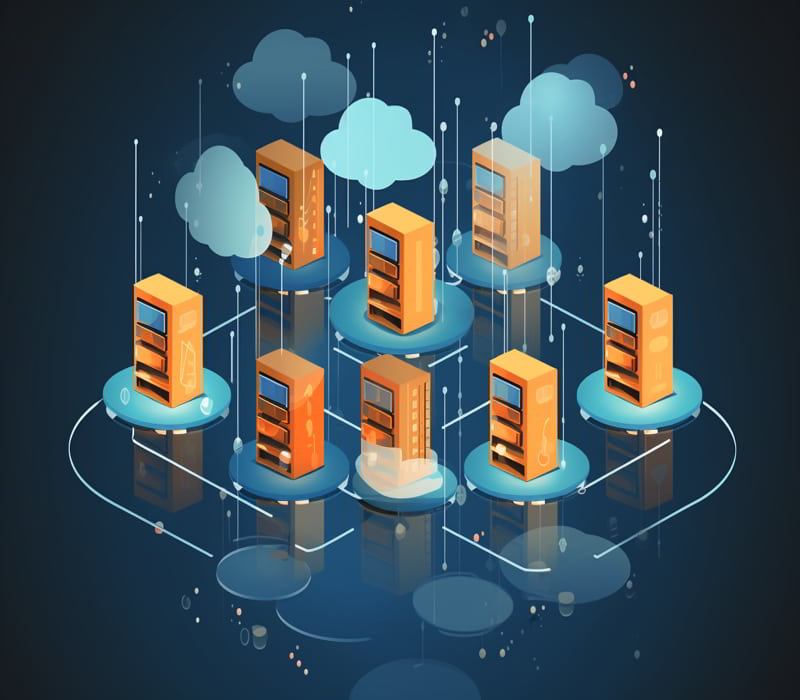Salesforce Integrates Interview Questions & Answers
Salesforce Integrates Interview Questions & Answers!!!Feeling Unprepared for Your Salesforce Integration Interview? Relax; We Are Here to Assist You!
Helping You Achieve Your Goals and Confidently Land Your Dream Job is Our Top Priority! Additionally, we are here to support you if you are anxious about being unprepared for an interview or if you feel like an Integration Specialist Interview Question is holding you back.
Let’s get ready for your Salesforce Integration Interview so you can feel confident and prepared.

Salesforce Integrates Interview Questions & Answers:
1. What is Salesforce and what does it offer?
Salesforce provides cloud CRM. Manage client connections with a single solution to improve the customer experience and outcomes. Salesforce started off as a SaaS company, but it now offers software and platforms for developers and users to create and distribute custom apps.
2. What is Salesforce integration and how does it work?
Salesforce integrates with Facebook, LinkedIn, Gmail, Outlook, and other websites. It uses APIs to analyze messages between Salesforce CRM and other applications. Salesforce integration provides proper third-party application access.
3. What are the features and benefits of Salesforce integration?
Salesforce integration improves customer experience and business outcomes by increasing productivity, data analysis, and decision-making, and connecting Salesforce website to external systems and apps. Understanding Salesforce integration layers and types can improve business choices and efficiency.
4. What are the different layers of Salesforce integration?
The Salesforce integration process includes user interface, business logic, and data integration. Third-party apps can be integrated with Salesforce via the user interface layer, the business logic layer allows data interaction and creation, and the data integration layer joins them.
5. What is REST APIs and how is it used with Salesforce?
Salesforce data may be accessed via REST APIs, a robust, convenient, and easy web service interface. It’s great for mobile app and online applications and lets users connect with Salesforce data and capabilities in a flexible and scalable way.
6. What are the different types of Salesforce integration?
There are various types of Salesforce integration, including single platform integration, custom code integration, batch integration, real-time integration, and real-time mashups.
7. What is single platform integration and what are its benefits?
Single platform integration is the easiest, most effective, and cheapest Salesforce integration option since it reduces hand coding time and cost. It takes longer and costs more to develop and maintain.
8. What is custom code integration and when is it used?
For specific solutions and requirements, developers must construct bespoke connectors using Salesforce APIs and hand-coded solutions to synchronize Salesforce.com and third-party application data. This is used when other integration types cannot meet certain criteria.
9. What is batch integration and when is it suitable?
Batch integration is the most typical Salesforce integration, using hourly, weekly, or monthly data updates. It suits infrequently changing but abundant data. It processes flat files best and is the easiest to deploy.
10. What is real-time integration and how does it work?
More efficient at handling faults and control queues, real-time integration is easier. It might happen in seconds, minutes, or anywhere in between. Systems that need immediate data sharing use real-time integration.
11. What are the benefits of Salesforce integration and why is it versatile and powerful?
Salesforce integration can connect data in a variety of ways upon request. Improve the customer experience and company success by enhancing productivity, data analysis, and decision-making, as well as connecting Salesforce.com to other systems and applications.
12. What is authentication and why is it important for Salesforce integration projects?
Before accessing Salesforce, systems and applications must be authenticated. For Salesforce integration projects, it ensures that only authorized users may access Salesforce and third-party application data and functions.
13. What is middleware and how to design for Salesforce integration projects?
Middleware connects systems and applications. Apex is not meant for complicated middleware applications; hence it should be avoided when creating Salesforce integration projects. Consider bespoke APIs to call third-party APIs for more data.
14. What is capacity planning and archiving strategies for Salesforce integration projects?
Salesforce integration projects need capacity planning and archiving to avoid data overflow. Before migrating data to Salesforce, capacity planning and archiving procedures are suggested for best project performance.
15. What is all-in-one access and how does it increase productivity in Salesforce integration projects?
All-in-one access lets users utilize Salesforce and the third-party software without switching. This reduces data duplication and frees up time for other duties, increasing productivity.
16. What are the benefits of integrating Salesforce with Outlook?
Outlook and Salesforce integration enables users to view all Salesforce contacts, leads, account opportunities, and cases. This increases productivity by allowing users to search and view Salesforce records in Outlook, create new ones, and add emails and appointments with a single click.
17. What are the benefits of integrating Salesforce with Workbench using REST APIs?
Using REST APIs, Salesforce and Workbench integrate to display data, increasing risk and benefit analysis and decision-making. The increased data flow and relevant reports help make better judgments and take the right actions by providing customer data insights.
18. How to display Salesforce records in Workbench?
Log into Salesforce and go to accounts for Workbench Salesforce records. Demo name, site, billing state, province, phone number, account type, and owner. Apex classes must be found and created.
19. What is the first step in business logic law integration in Workbench?
The first step in business logic law integration in Workbench is creating a global class, which acts as a container for the code. The global class is named view account. The HTTP get method is used to extract account details from Salesforce.
20. How to display the list of accounts in Workbench?
The global static list account and instance list account display a list after account details are extracted. Users can select username, phone number, state issues, and kind. For each account, users can choose name, phone number, and type.
21. What are the nested API methods in Workbench?
The rest explorer window allows nested A P I methods on the rest service URI. Get, post, patch, remove, and head. Get gets record or object information, post creates new objects, patch fixes records, deletes records, and head retrieves metadata.
22. What is the first layer of Salesforce integration?
Users interact with Salesforce in the user interface layer, the primary layer. This layer lets you display Salesforce’s user interface in any third-party program.
23. What is the business logic layer in Salesforce integration?
Salesforce integration business logic layer interacts with data and improves UX. This layer links first.com’s business logic to the third-party app. Third-party apps and Apex web services integrate inbound logic.
24. How to integrate the business logic layer in Salesforce integration?
Salesforce integration uses a global class to unify the business logic layer across all Apex scripts and Salesforce. This global class is then subdivided into an inner Apex class with the WSDL request message and third-party application variable set.

Salesforce Integration Training

25. What is the importance of Salesforce integration in running a business?
Salesforce integration is a crucial aspect of running a business, enhancing productivity and bringing significant improvements to the overall success of the organization.
26. What are the layers of Salesforce integration?
Each Salesforce integration layer has perks and cons. The first layer, business logic, implements an end-to-end business process using mixed business logic across apps. Layer three, data integration, integrates the user interface and business process levels.
27. What is the most popular type of Salesforce integration?
Single platform integration is a common and best Salesforce integration option. Integration is the easiest, most effective, and cheapest choice, saving time and money on hand coding. It takes one-third the work to efficiently relay data.
28. What is custom code integration?
Custom code Salesforce integration meets individual needs. Synchronizing Salesforce.com with third-party data requires custom API connectors and hand-coding. First.com APIs allow developers build and integrate Salesforce.com apps.
29. What is batch integration?
Batch integration, the third type of Salesforce integration, updates data hourly, weekly, or monthly. Infrequently changing data generated in large quantities is ideal for this strategy. It processes flat files best and is the easiest to deploy.
30. What is real-time integration?
Real-time Salesforce integration, the fourth type, simplifies queues and issues. It could happen in seconds, minutes, or longer. Although it can delay or malfunction, it integrates data quickly.
31. What is the fifth type of Salesforce integration?
The fifth type of Salesforce integration is real-time mashups, which requires building a user interface in Visual Force.
32. When is real-time mashups used?
Real-time mashups are used when immediate access to data or residing outside of Salesforce is needed, such as retrieving multiple documents from several external systems.
33. What are the different types of Salesforce integration solutions?
The different types of Salesforce integration solutions are single platform integration, custom code integration, batch integration, real-time mashups, and real-time mashups.
34. What are the advantages of Salesforce integration?
The advantages of Salesforce integration include all-in-one access, increased productivity, enhanced communication, and automation of workflows without any code.

35. What is Apex programming language used for in Salesforce integration?
Apex programming language is used for code-based integration in Salesforce integration. It offers powerful features that allow organizations to create custom APIs and third-party APIs for additional data.
36. What is the purpose of creating custom APIs in Salesforce integration?
Salesforce integration requires custom APIs to call third-party APIs for data. Data capacity requires numerous licenses, and capacity planning and integration solutions are recommended before moving data to Salesforce.
37. What are the essential considerations for successful Salesforce integration?
Successful Salesforce integration requires knowledge of third-party application integration requirements and steps, system authentication, API limit, enterprise and unlimited data integration, and configuration options.
38. How do users integrate Salesforce with Workbench using REST APIs?
To link Salesforce with Workbench using REST APIs, users must first enter their Microsoft user name and password, then a form with their name, work email ID, job title, firm, country or area, and phone number. Users can click “get it now” to continue Salesforce setup after completing these details.
39. What information is required to integrate Salesforce with Workbench?
To integrate Salesforce with Workbench, users must first enter their Microsoft user name and password, followed by a form that requires entering their name, work email ID, job title, company, country or region, and phone number.
40. What is the purpose of using REST APIs for Salesforce integration?
By using REST (Representational State Transfer), (Application Programming Interface) APIs, users can perform all the functionalities of Salesforce and Outlook at one platform, eliminating the need to switch between the two platforms.
41. What are the requirements to integrate Salesforce with other applications using APIs?
To integrate Salesforce with other applications using APIs, one must log into the Salesforce developer edition and create an account.
42. What is the purpose of creating Apex classes in Salesforce integration?
Creating Apex classes is the first step in business logic layer integration, which acts as a container for the code.
43. How can one set rest resources and URL mapping for Apex classes?
To set rest resources and URL mapping for Apex classes, one must name the mapping accounts forward slash star and enclose the bracket.
44. What is the purpose of creating a global class in Salesforce integration?
Creating a global class allows for the execution of code and acts as a container for the business logic layer integration.
45. How can one extract account details from Salesforce using Apex code?
One can extract account details from Salesforce using the HTTP (Hypertext Transfer Protocol) GET method in Apex code.
46. What is the purpose of generating an enterprise WSDL file in Workbench?
Generating an enterprise WSDL file in Workbench allows for the execution of code and acts as a container for the business logic layer integration.
47. What are the available methods for performing on the REST API service URI in Workbench?
The available methods for performing on the REST API service URI in Workbench are GET, POST, PATCH, NEXT, DELETE.
48. How can one execute the URL mapping accounts in Salesforce integration?
To execute the URL mapping accounts in Salesforce integration, one must copy, impose, and execute the mapping.

Salesforce Integration Training

Let’s be more sparkle by reading MCQ’S of Salesforce Integration

1) Which of the following describes Salesforce?
1. A cloud-based software company
2. A software as a service (CRM) company
3. A computer hardware company
4. A software development company
2) What is the primary function of Salesforce?
1. Managing interactions with customers
2. In order to oversee the relationships between employees
3. In order to oversee firm activities
4. As a means of controlling engagements on social media
3) Which of the following external systems can be integrated with Salesforce?
1. Google Drive
2. Microsoft Office
3. Facebook
4. All of the above
4) What is the role of the user interface layer in Salesforce integration?
1. To discover components for multi-system user interface integration
2. To handle multi-application business logic scenarios
3. To preserve application data consistency across connected systems
4. Provide search functionality
5) Which of the following is a Salesforce integration option that reduces the time and financial resources needed for hand coding?
1. Single platform integration
2. Custom code integration
3. Batch integration
4. Real-time integration
6) What is the role of custom code integration in Salesforce?
1. To decrease hand-coding time and cost
2. To sync Salesforce.com and third-party data
3. To handle flat files
4. Create new apps
7) Which of the following is the easiest implementation method of Salesforce integration?
1. Integration
2. Real-time code
3. Code integration
4. Single platform integration
8) What type of data is suitable for batch integration?
1. Data that changes frequently
2. Infrequently changing but abundant data
3. Real-time data
4. Data for creating new apps
9) What is the purpose of real-time mashups in Salesforce integration?
1. Help retrieve many documents from remote systems
2. To handle custom UI development
3. To efficiently access and share external system data
4. For personalization, branding, call-outs, and complex flows
10) Which type of integration is best suited for data that changes infrequently but is generated in a greater quantity?
Integration Real-time
batch integration
Code platform
Single code
11) What is the role of authentication in Salesforce integration?
1. To safely transfer data between systems
2. To save time on data duplication
3. evaluate API limits.
4. Boost productivity
12) What is the purpose of middleware issues in Salesforce integration?
1. Allow custom APIs to call third-party APIs for more data
2. To efficiently access and share external system data
3. System authentication time
4. API limits
13) What is the role of capacity planning and archiver strategies in Salesforce integration?
1. To safely transfer data between systems
2. Allow custom APIs
3. Rreduce system authentication time
4. Access capacity planning and archiver strategies before migrating data to Salesforce.
14) What is the first step in integrating Salesforce with Outlook?
1. Searching Microsoft Office and choosing all apps at the bottom
2. Entering their Microsoft user details
3. Salesforce login and Outlook email connection
4. In one click, create Salesforce records and add emails and appointments.
15) What is the benefit of integrating Salesforce with Outlook?
1. Viewing all Salesforce contacts, leads, account opportunities, and cases
2. Using Outlook and Salesforce simultaneously
3. Search and browse Salesforce records in Outlook, create new Salesforce records, and add emails and appointments in one click.
4. All of the above
I hope that you are now better prepared for your next interview and that you are able to demonstrate a strong understanding of Salesforce integration.
All the Best!!!

Salesforce Integration Course Price


Saniya
Author